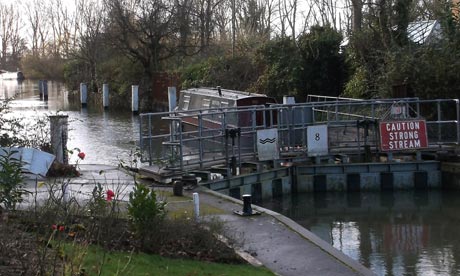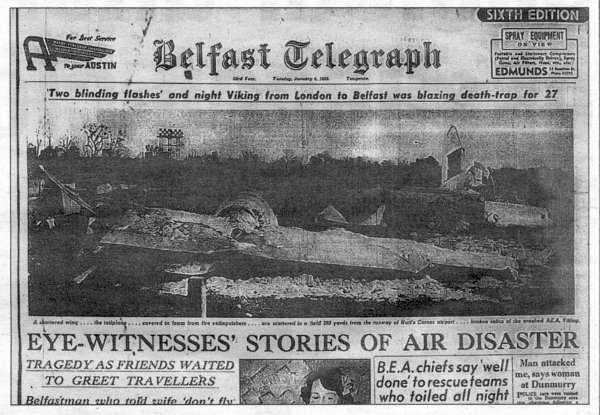
Sixty years ago this month 133 people lost their lives when the Princess Victoria sank off Northern Ireland’s coast. It was one of the UK’s worst post-war sea tragedies yet today the terrible loss is barely remembered by the wider public.
It was one of the UK’s worst peacetime sea disasters. The lives of 133 people were lost when the car ferry Princess Victoria sank in a ferocious gale off the Co Down coast on January 31, 1953.
Not one woman or child on board survived, and it is regarded as “a generation’s Titanic” — but very little is known about the tragedy outside Northern Ireland and Scotland.
Now ahead of the 60th anniversary of the disaster calls have been made for more to be done to ensure future generations remember the worst maritime disaster in the waters of the British Isles.
The roll-on roll-off ferry went down with only 44 survivors — all men — out of 177 people who set out that stormy morning on the short crossing from Scotland.
Annual commemorations are held in Larne and Donaghadee and memorials also stand in Larne, Stranraer and Donaghadee.
Many of the victims were from Northern Ireland and in Larne, and most families were said to be affected in some way.
But Ards Councillor Mervyn Oswald (below) said more needs to be done to “preserve the memory” of the victims and the tragedy for future generations.
He said a commemorative service held in St Anne’s Cathedral, Belfast should be considered.
“There were 133 lives lost and with the Deputy Prime Minister of Northern Ireland Major Maynard Sinclair losing his life, it warrants a commemorative-type service,” he said.
“It is certainly something that should be thought about.”
Mr Oswald said discussions between Ards and Larne councils should develop.
“I think this year will hopefully revive and spark a discussion that both councils should be thinking about how to preserve these histories,” he said.
“How to commemorate it and to bring it to the forefront of the younger generation is always a difficult ask but I think it is fast fading.”
The author of Death In The North Channel: The Loss Of The Princess Victoria, Stephen Cameron, described the 1953 disaster as a “generation’s Titanic”.
“There were no women and children who survived,” he said.
“They were all put into one lifeboat. That lifeboat was set adrift and then lifted by the waves and smashed against the hull of the ship and they were all thrown into water — not one woman or child survived because of it. The families still feel the pain very much.”
Mr Cameron, however, said he believed the current commemorations are “fitting”.
“I do feel what is there is fitting for the victims,” he said.
“But this was the largest loss of life in the water surrounding the United Kingdom and it is little mentioned apart from here in Northern Ireland — this was a generation’s Titanic.”
In Larne, the annual service overseen by the Royal Antediluvian Order of Buffaloes will be held adjacent to Larne Leisure Centre at 11am.
Also being considered is an unveiling of a painting of the Princess Victoria purchased by Larne Council.
The wreckage of the ferry still lies at the bottom of the Irish Sea, five miles north east of the Copeland Islands.
And discussions will also take place over whether a ferry will be organised to travel to the sinking site at sea to lay wreaths on the water.
Donaghadee will host a memorial service on January 27 and a weekend of fundraising events to help preserve the lifeboat that saved 33 of the 44 survivors.
The Sir Samuel Kelly lifeboat was launched on the night of 31 January 1953 from Donaghadee harbour.
A brass band concert to a 1953 ‘night at the movies’, will also be held with all proceeds raised going to help preserve the Sir Samuel Kelly.
It began as just another regular ferry crossing from Stranraer to Larne on the stormy day the Princess Victoria sailed out of the sheltered waters of Loch Ryan in January 1953.
Warnings of severe gales in the Irish Sea had been issued earlier in the day and another vessel had already been forced to drop anchor in the loch after encountering hurricane-force winds.
Despite the fierce storm, at 7.45am the roll-on/roll-off ferry — with her open stern protected only by five-foot-high doors — set sail under the command of Captain James Millar Ferguson with 177 passengers on board.
Within hours the stormy conditions would overwhelm the ferry, and the resulting disaster would send shockwaves around the British Isles.
Princess Victoria would never reach her destination. Instead, she sank in the 21-mile stretch of water between Stranraer and Larne with the loss of 133 lives.
The storm struck its fatal blow just 90 minutes after the vessel set sail. At 9am a massive wave burst through the stern doors, buckling them hopelessly out of shape.
Crew members struggled desperately to keep the mangled doors closed, but sea water surged onto the car deck.
As the belly of the ship filled with water, the Princess Victoria began to list dangerously.
Wearing their lifejackets, passengers tried in vain to bail out flood water which had seeped into the lounge area. At 10.32am the first SOS signal was sent out. However, a lifeboat was given the wrong directions to get to the foundering ferry.
Just after 1pm the Radio Officer sent a signal, giving her position and alerting other vessels in the area that they were about to abandon ship. But the wrong co-ordinates were given.
At 1.58pm the last message from the ferry's radio operator was transmitted. By 2pm, the list was so bad that lifeboats on the starboard side could not be lowered.
Two of the boats carrying women and children dropped down suddenly into the treacherous seas and capsized. Their occupants were hurled into the turbulent, icy waters.
Three others floated clear, but then the ferry flipped over.
The mission to rescue the passengers and crew was badly hampered by the fierce winds.
When rescue vessels managed to reach the crippled ship, waves had risen to a height of 50 feet.
As she sank, Captain James Ferguson stood with one hand firmly grasping the rail of his ship, the other raised in salute.
There wasn't one woman or child on board who survived the disaster. Only 44 men were saved.
Among the dead that Saturday were the Victoria's master, Captain James Ferguson, the deputy Prime Minister of Northern Ireland, J Maynard Sinclair, and the MP for North Down, Sir Walter Smiles.
Those on board Princess Victoria were not the only victims of the sea that day.
To the north of her final resting place, the trawler Michael Griffith was also lost, claiming the lives of the 14 on board and two of the crew of the Islay rescue lifeboat.
For their bravery, Portpatrick, Donaghadee and Cloughy lifeboat crews received RNLI awards.
A 35-day inquiry into the events found that the stricken Princess Victoria had been in an “unseaworthy condition.”
The owners, British Railways, were held entirely to blame.
It concluded: “If the Princess Victoria had been as staunch as the men who manned her, then all would have been well and this disaster averted.”
Former Belfast Telegraph Sports Editor Malcolm Brodie was one of the first to report on the sinking of the Princess Victoria
The day was one of the worst I’ve ever seen in the UK. The wind was howling throughout Northern Ireland.
I was in the Belfast Telegraph office at about noon and we already knew the ship was having difficulty in crossing the North channel — but that was the story for the entire fleet at sea that day because of the weather.
We had heard there was a woman whose husband was a seafaring captain had been listening to an exchange on a short-wave radio.
I went up to the house and she had the radio in a cubbyhole. I sat down and soon grasped the entire story.
As the drama unfolded, I began to realise it was something special and of a greater magnitude than at first thought. The reception on the radio was first class but it all ended when the skipper of a coaster ship said there was nothing that could live in those seas and they were pulling out.
I went down to Donaghadee that night and it was a very poignant scene.
The lifeboat did a round-up of all the people who had been aboard — and when you realised the number involved it became clear that this was one of the greatest sea tragedies in Irish history.
One neighbour of mine asked me if their relative’s name was on the list of survivors — and unfortunately I had to tell them it wasn’t.
Later, we interviewed a seaman on the ship and asked him why none of the women and children were saved.
He said that when they went down to the lifeboats they would have been standing up as they boarded and would simply have tumbled into the sea.
We were stunned at just how many lives had been lost in such a small area of sea, although it has always been known as one of the most dangerous stretches of water in the world.
The Belfast Telegraph told the terrible story on its front page that night and the next day we turned out a special edition.
The repatriation arrangement was made at Donaghadee. The whole place was in a state of shock and utter sadness at the scale of the loss of life.
Of course, it was a reminder of the Titanic — not as large a disaster, but still as tragic.
The story was an exercise in how the Belfast Telegraph tells big stories affecting Northern Ireland.
As journalists, we were looking at the horror and the sadness that was developing among the relatives of those who had drowned.
It was a heartbreaking story for the paper — and recalling it now brings it all back to me.
Friday 4 January 2013
Read more: http://www.belfasttelegraph.co.uk/news/local-national/northern-ireland/princess-victoria-the-disaster-that-sank-from-memory-16257135.html#ixzz2GyLYMFcY














